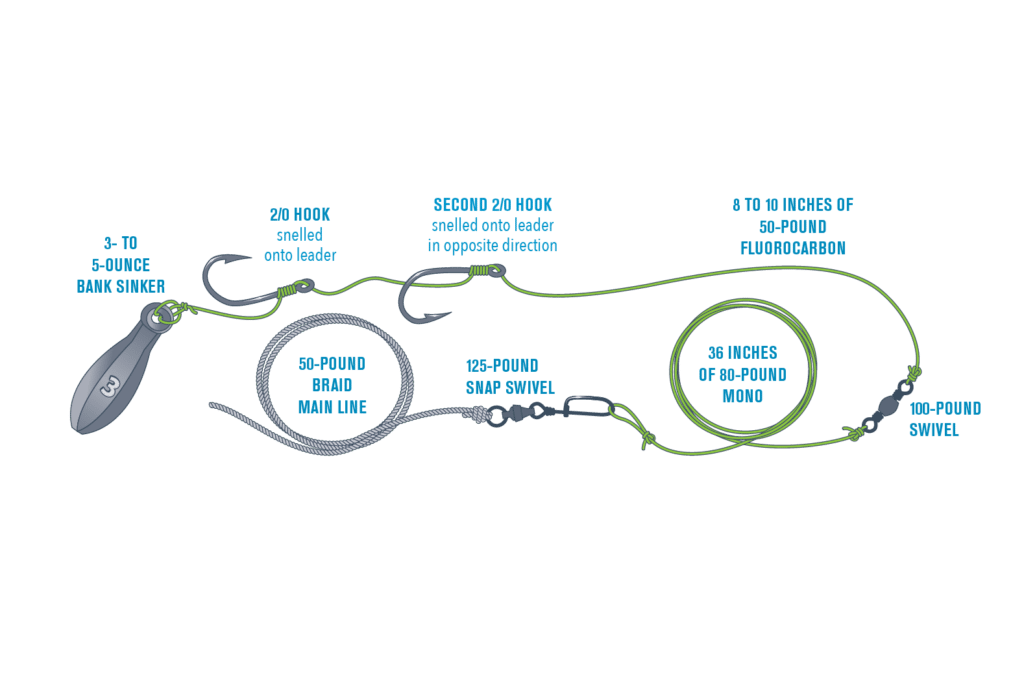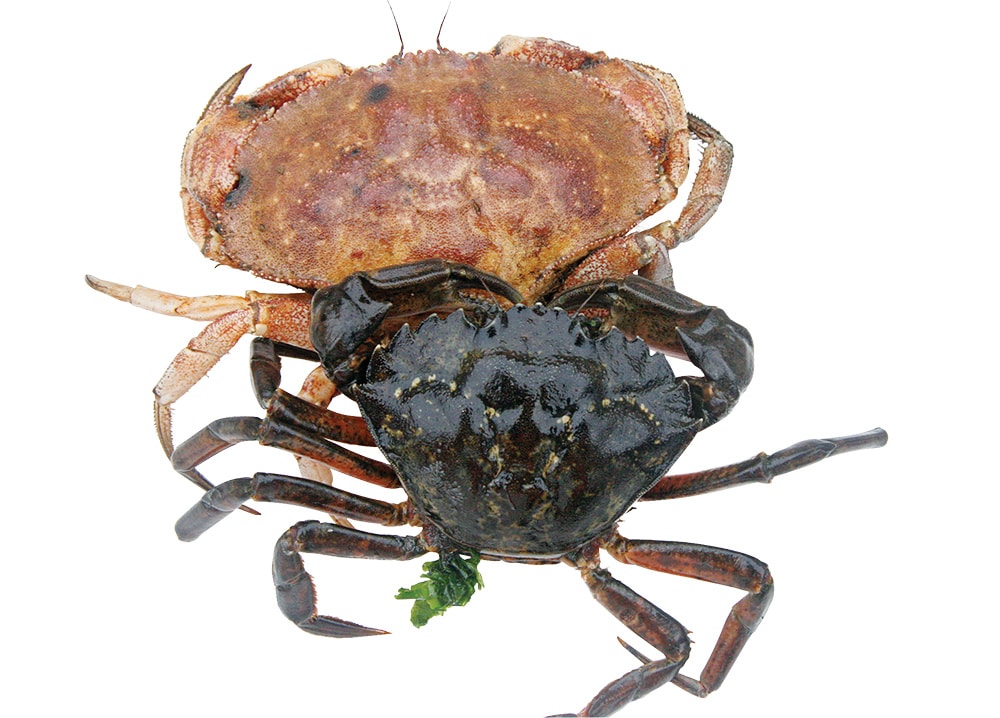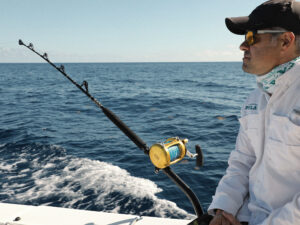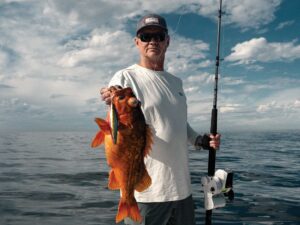
Blackfishing is a game you just can’t bluff. You’re either horrible at it, fair or possibly even “good,” with room left for one-half of 1 percent of tog anglers to be considered excellent. Battling one of the most cerebral fish in the ocean isn’t easy, and consistent trophy-catching toggers tend to be silent assassins who speak lightly, keeping their secrets close to the vest. There’s a noticeable difference in technique and tactics between hard-cores who continually swing 10-plus-pound trophy tog over the rails and bottom bouncers who dabble with the 3- to 6-pounders. Every pro has an edge he brings to the blackfish grounds to tempt the tog of a lifetime. Here’s an inside look at some of the best-kept blackfish secrets.
Find Your Quarry

Record Tautog
From New York to Virginia, follow water temperatures in the high 40s to the low 50s to find blackfish, with a focus on wrecks in the mid-20-mile range. “Winter to spring in the mid-Atlantic is prime time to target the largest of tautog,” says Capt. Ken Neill of the Healthy Grin in Virginia Beach, Virginia. “Blackfish are homers — they tend to come back to the same wreck time and time again.” Neill proved it with an IGFA-tagged 12-pound tautog he recaptured on the wreck it was tagged on seven years prior. “Crazy” Alberto Knie, a tog aficionado with a 17-pounder to his credit, adds, “Of course tog hang around sticky wreck structure, but look for wooden wrecks, off-the-grid spots, where the largest of all tog gravitate, and stay in 80 to 100 feet of water.” Knie adds: “Fish the wrecks that nobody hits. That’s where you’ll find trophy white-chinners hanging together.”
Knie’s 17-pound best tautog taken off an Atlantic City wreck actually lost the pool on the boat to a 20-pound fish. Neill’s 24.3-pound Virginia state record blackfish was caught after he waded through a few 10- to 15-pounders. “Big tog don’t want competition from the smaller tog,” says Knie. “Don’t concentrate on smaller fish in low-lying rocky structure like rockpiles and barges. Go to the high-profile wrecks.” Neill concurs: “Find the scattered debris fields and drop down within the holes, or where the wreck meets the seafloor, right on the edge. The divers I have spoken with report that the largest of tautog hide in the big holes on the wreck, inside the nooks and crannies.”
Tempting Tog


Tog are curious creatures by nature, and if there is commotion, they will come to investigate. Tempting one of the pickiest fish in the ocean requires some savvy. “Feeding bergalls and small tog will hype up the larger fish and get them to come investigate what’s going on, but many times, they wait and watch. You don’t want to keep losing baits to smaller tog, so go big,” says Knie. Going big for Crazy Alberto means using large white-legger crabs or even whole blue-claw crabs. And timing is everything. “You want to fish when the tide is slack, without much current,” says Neill. “I like fishing from early light up until about 10 a.m.” Knie adds: “When the water slacks up a bit, it’s an up-and-down approach though best with a tiny bit of current; or if it’s dead slack, even a twang with your forefinger and thumb on the braided line will make the crab bait dance and tease the fish.”
The hook-set is also an art form. “You know you’ve got a big tog on when it moves the weight, actually picks it up and moves along the bottom with it. Drop the rod tip to give a belly to the line to make the crab look natural and let the fish inhale the bait on a slack line.”
Regarding the battlegrounds, there will be a lot of casualties. “You’re going to lose lead and rigs. It’s a fact of life when targeting bulldog tog, so gear up accordingly.” Knie’s breakaway rig is designed to sacrifice the sinker when it sticks in structure. “On most of the large blackfish I’ve caught, I’ve had to break off the sinker when they get back into the wreck. I lose the sinker but come back to the dock with a tog to talk about.”
Beating the Beast


There’s no room for pussyfooting when dealing with behemoth blackfish. “When you connect, you have to reel fast and outmuscle that fish. Get him five feet above the wreck to even be in the game,” says Knie. “They play dirty: They are in their kitchen and they know where the knives are to cut you off. Keep your drag set to 30 pounds, almost locked, to pull them out. If you get them outside the five-foot window, they are yours.”
Braided line offers the sensitivity to feel the strike and boasts pulling power to get tog off the bottom, with a minute bit of stretch from a fluorocarbon leader to prevent a pulled hook. A 10-pound tautog is the trophy fish of lifetime, but when you breach the 12-plus-pound mark, consider yourself among the elite. “You can fish for grouper, big snapper, whatever, but pound for pound, a 10-pound tautog puts them all to shame. And a 15- to 20-pound tog? Forget about it,” says Knie.
Anthony Monica continues to hold the world record — a 25-pound blackfish caught out of Atlantic City, New Jersey — but records are made to be broken. Implement these tactics the next time you’re out chasing down bulldog tog, and maybe you can lay claim to one of the most underground, respected titles of the fishing world.

Tautog Planner
What: Trophy tautog, 10 to 25 pounds
When: December through March
Where: Wrecks and deepwater reefs from New Jersey to Virginia
Who:
Tautog Tackle Box
Crabs are the bait of choice, but they are not all created equal. The invasive Asian crab has become a favorite tog food, and along with both fiddler crabs and green crabs, are potent baits, but “white-legger” or Jonas crabs and blue-claw crabs fit the bill for the biggest blackfish. To enter an elite realm, hermit crabs take the cake. “If you wanna play dirty, use hermit crabs. Befriend a commercial potter or barter a few beers to get a bushel from him,” Knie says. Hermit crabs can be hooked through the tail, twisted around the body and out through the claw, so a claw is exposed. Blue-claw or Jonas crabs can be fished whole on a two-hook snafu rig, or simply cut in half or quartered, and lanced through the bottom knuckle and out through the apron. Use green crabs with orange eggs intact and, if fished whole, crack the shells to let the juice spill out.
Rods: Medium to fast-action 7-foot rod Lamiglas TFX 7040CT, St. Croix TM66MHF, or equivalent. On party boats, an 8-foot rod helps to get baits out past the others.
Reels: Shimano Torium 16 or 20, Abu Garcia 6000 high-speed retrieve 6.2:1 reel or equivalent.
Line: 50- to 80-pound braided line, with an Albright or Alberto knotted to an 4- to 5-foot topshot of 80-pound fluorocarbon leader.
Lures and Baits: Hermit crabs, blue-claw crabs, white-legger (Jonas crabs) crabs, green crabs, fiddler crabs. Size 5/0 to 7/0 Owner Octopus hook.









